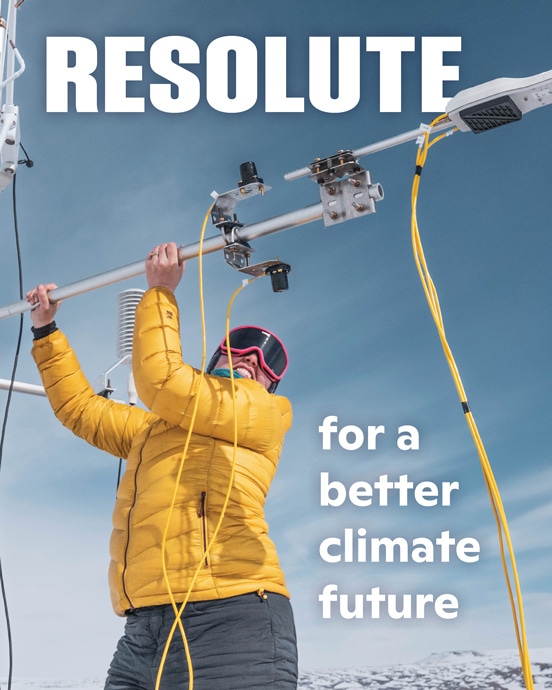Acre’s communities face drinking water shortage amid Amazon drought

Rosineide de Lima, a resident of the Panorama community in Rio Branco, in the state of Acre, faces a daily struggle for survival amid the severe drought that has hit Acre’s capital and surrounding region. In her house, where seven people live, water is rationed daily. “My well will run dry in August,” she told Mongabay, worried about the health of her five children. “For now, I’m still managing to get some water from it to wash clothes once a week and do household chores, but for drinking I’ve started buying mineral water since my children started having health problems, such as dehydration.”
After experiencing an extreme drought in 2023, the Amazon is already feeling signs of a new drought this year. According to experts, the 2024 drought could be even worse. It has already affected 69% of the Amazon’s municipalities, an increase of 56% compared with the same period in 2023.
N.W.T.’s Scotty Creek Research Station rebuilt, now with its own fire-protection system
Peter Cazon of Łı́ı́dlı̨ı̨ Kų́ę́ First Nation says he’s ready to start up sprinklers at ‘drop of a dime’
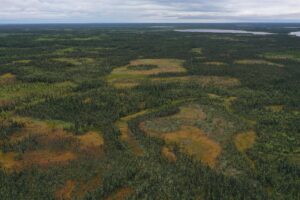
Łı́ı́dlı̨ı̨ Kų́ę́ First Nation is preparing for the grand reopening of the Scotty Creek Research Station in the N.W.T. later this month. The site was almost entirely gutted by wildfire two years ago, and now the First Nation has taken steps to keep that from happening again.
Peter Cazon, a land guardian for the Łı́ı́dlı̨ı̨ Kų́ę́ First Nation (LKFN), has applied his more than two decades of experience in fighting forest fires to the task. He said he’s built a 75-metre-wide firebreak around the camp, and has helped set up a sprinkler system.
If pilots flying in the area notice fire, Cazon said they’ll call into the community’s airport and soon after he’ll be notified of the threat.
In recent public comment, scientists at Woodwell Climate Research Center warn against the use of the Inflation Reduction Act’s (IRA) clean electricity tax credits to support biomass as an effective clean energy solution. Scientists cited its higher carbon footprint per unit energy compared to burning fossil fuels, and highlighted that claims to offset these emissions by planting trees are misleading, as new trees take decades to centuries to recapture lost carbon. The comment, submitted in response to the Internal Revenue Service (IRS) and U.S. Department of Treasury’s proposed guidance on the Clean Electricity Production Credit and Clean Electricity Investment Credit, advocates for more rigorous guardrails from the agencies regarding the use of wood for bioenergy, greater regulatory clarity, and more accurate accounting of emissions from wood-burned fuel.
The Clean Electricity Production and Investment Credits were designed to provide incentives “to any clean energy facility that achieves net zero greenhouse gas emissions.” The proposed guidance, released in June, is intended to clarify and add certainty around how to measure and define “net zero,” and how clean energy production facilities can qualify for these incentives.
In their comment, however, scientists emphasize more work must be done to achieve this goal: “The content of the proposed guidance is ambiguous or even conflicting about some parts of the rule regarding sources of forest bioenergy,” they write. “Parts of the guidance should be made much clearer and more definitive to ensure that there are no unintended consequences. Guardrails could be put in place to avoid the many ways that increasing use of wood for bioenergy would increase emissions rather than having the desired effect of decreasing emissions. It is also important to consider the many values of forests beyond climate mitigation, such as timber, biodiversity, water, and recreation.”
Scientists also note the proposed guidance does not properly account for the net emissions associated with forest bioenergy – all of which contribute to its high carbon footprint and add to concerns from experts that biomass can actually worsen the climate crisis – including those from harvesting intact forests, logging debris, transporting woody biomass, and converting biomass to fuel, as well as from feedstock, fertilizers, and forest management practices like thinning, where live trees are removed to reduce wildfire risk or promote forest growth, and more.
Because many of these emissions are left out, the proposed guidance overestimates the potential of forest bioenergy to achieve the IRA’s intended goal of lowering emissions, and further fuels incorrect assumptions that biomass energy is an effective, carbon-neutral alternative to fossil fuels.
Throughout the comment, scientists offer recommendations to help decision makers more accurately incorporate and represent these emissions in policy. For example: 1) account for both direct and indirect emissions; 2) avoid the fallacy of assuming carbon neutrality; and 3) take a case-by-case approach to calculate the counterfactual emissions, or what the emissions would have been had the wood or biomass not been used for bioenergy; among others.
Hurricanes Debby and Beryl show how hot oceans fuel a deadly storm season
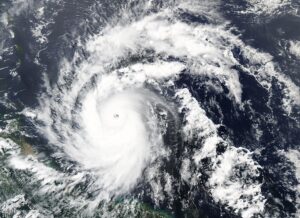
Weeks before the typical peak of Atlantic hurricane season, abnormally hot oceans spawned a record-shattering storm. And the trouble is just getting started.
For 15 straight months through June, global sea temperatures have hit all-time seasonal highs. In the Gulf of Mexico and east of Florida, coastal waters are already pushing 90F (32C). Not only is ocean heat breeding dangerous hurricanes like Beryl much earlier in the year than usual, but it’s also giving those storms the fuel to get stronger, faster. Debby slammed into Florida as a hurricane on Monday after rapidly gaining power in the Gulf.
Continue reading on Bloomberg.
Deforestation harms climate less than other types of Amazon degradation, study finds
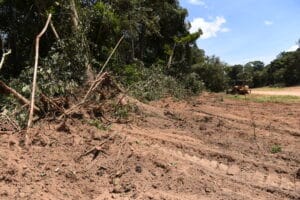
Brazil’s President Luiz Inacio Lula da Silva came into office in 2023 pledging to tackle deforestation in the Amazon and restore his country as a climate leader after years of intense destruction in the world’s largest rainforest under predecessor Jair Bolsonaro.
Lula’s commitment to end deforestation by 2030 is on track with tighter enforcement helping to cut deforestation rates by more than half, according to government figures. But a new study indicates that deforestation alone accounts for a only fraction of climate damage involving the Amazon.
Geoengineering gains momentum, but governance is lacking, critics say

As climate change rapidly advances, with 2023 and 2024 vying for the hottest year on record, solar radiation modification (SRM) geoengineering strategies are gaining momentum as short-term climate fixes. These especially include proposals for the release of cooling aerosols into the Earth’s lower stratosphere.
But preliminary geoengineering efforts (represented by lots of computer modeling and a smattering of small-scale field tests) are proceeding against a backdrop of public mistrust and resistance, while also provoking urgent calls by experts for national and international policies and regulatory structures to govern this burgeoning field.
World’s forests failed to curb 2023 climate emissions, study finds
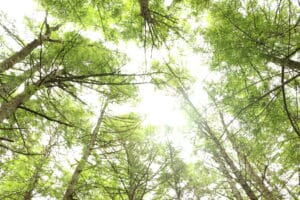
Forests and other land ecosystems failed to curb climate change in 2023 as intense drought in the Amazon rainforest and record wildfires in Canada hampered their natural ability to absorb carbon dioxide, according to a study presented on Monday.
That means a record amount of carbon dioxide entered Earth’s atmosphere last year, further feeding global warming, the researchers said.




